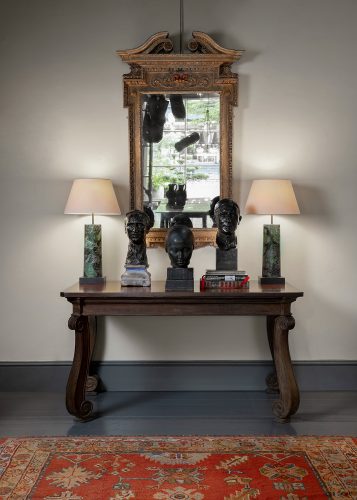
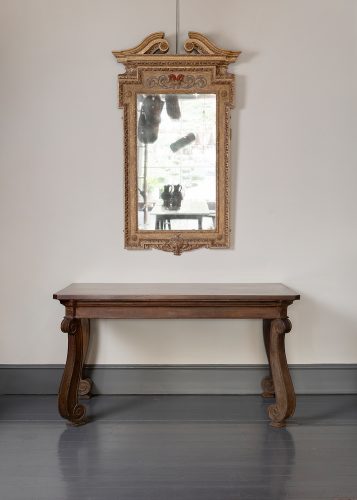
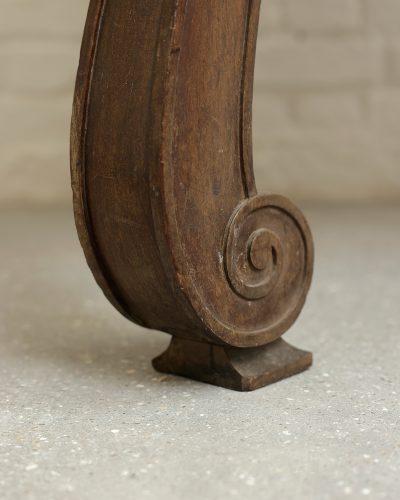
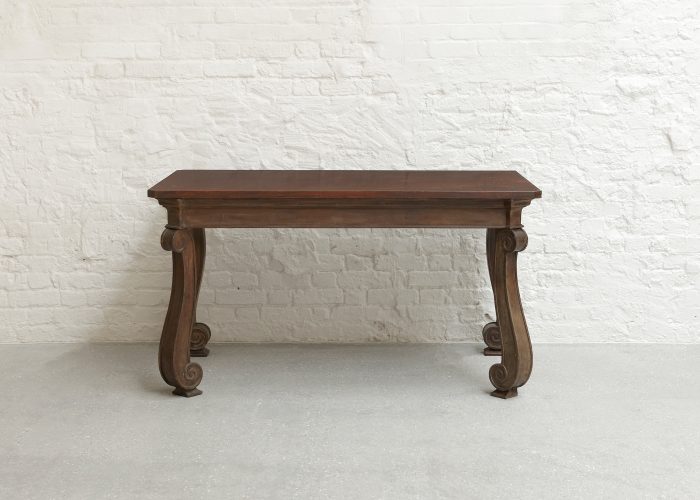

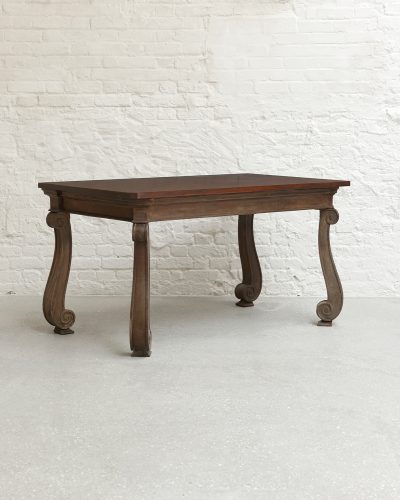
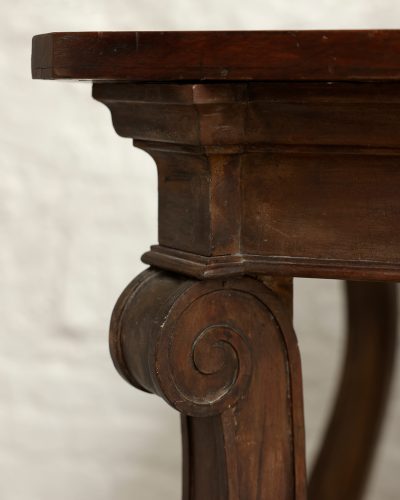
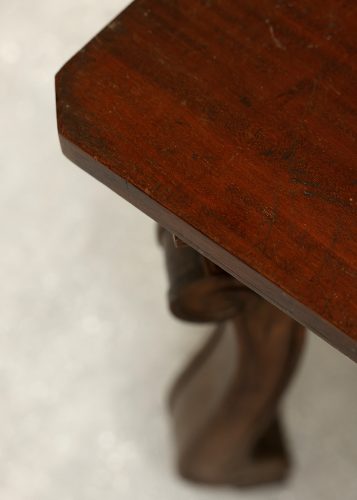
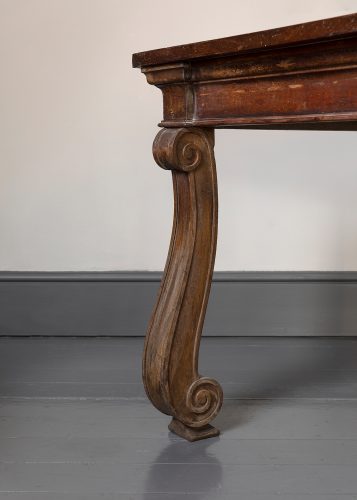
A George II ‘Kentian’ Mahogany Pier Table
A George II, estate made, pier or console table in the manner of William Kent, the mahogany rectangular top (possibly later) with canted corners, over a stained pine base, the plain corniced frieze with outset corners, on four plain S-scroll legs with restrained volutes, terminating in shaped bracket feet. A table such as this carries the imprint of the taste for muscular ‘architectural’ pieces around the middle of the eighteenth century. English, circa 1750
The classical restraint of Antonio Palladio’s (1508-1580) Renaissance architecture had a far-reaching influence on a generation of scholars, patrons, architects, and designers in Britain, particularly in the first half of the eighteenth century. Grand country houses such as Holkham Hall in Norfolk and the ‘Palladian’ villa Chiswick House in London respectively built and furnished by Thomas Coke, 1st Earl of Leicester and Richard Boyle, 3rd Earl of Burlington are superb examples of this aesthetic, exemplified by the input of the architect and designer William Kent (1685-1748). Historians have discovered complex patterns of patronage with many different workshops and furniture makers contributing to the furnishing of such grand houses. And in some cases, skilled estate carpenters and joiners were involved in interpreting designs for their employers. The bold, sculptural S-scroll legs of this table are reminiscent of the scrolls framing a picture above the fireplace in Holkham’s Long Library.